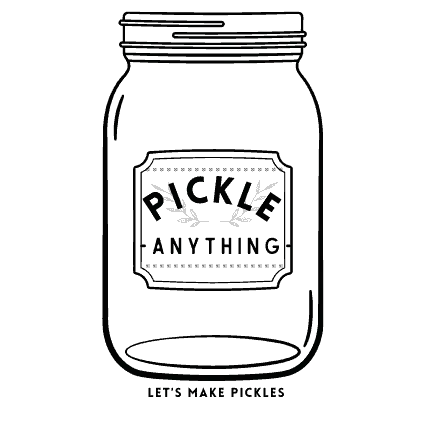While a mason jar is a traditional option for pickling, plastic containers can provide an easy and less expensive alternative.
Plastic containers are available in multiple sizes to accommodate any pickling project.
But make sure you read below about these precautions when using plastic for pickling.
 Pickle In Plastic Containers?” class=”wp-image-2132″/>
Pickle In Plastic Containers?” class=”wp-image-2132″/>What is pickling?
Pickling is a method of food preservation that has been used for centuries.
It involves preserving foods in an acidic liquid, usually vinegar or brine, which helps to prevent spoilage and extend the shelf-life of the food.
Pickling can be used on fruits, vegetables, meats, fish, and even eggs.
The pickle solution’s acidity helps slow down bacteria’s growth while adding flavor to the food.
In addition to preventing spoilage and extending shelf life, pickles are known for their unique taste and texture, making them a favorite snack or side dish worldwide.
Benefits of using glass or ceramic jars
Pickling includes higher acidity levels in the liquid, which helps to preserve the food for longer.
Glass or ceramic jars also keep out oxygen and light, both of which can contribute to spoilage.
When storing your pickles, you should ensure that they are kept at a cool temperature – below 50°F – as this will help prevent spoilage and ensure that your pickles stay fresh for longer.
Pickling is a great way to add flavor and extend the shelf-life of many different types of food.
It’s easy to do at home, but many pre-prepared options are available on the market if you don’t want to go through the process yourself.
No matter what you choose, pickling is a great way to make sure that your food lasts longer and has an exciting flavor.
Can You Pickle In Plastic Containers?
While it is possible to pickle in plastic containers, it is not generally recommended.
Plastic does not provide the same level of protection against oxidation that glass or ceramic containers offer and can leech chemicals into the pickling liquid, which can affect the taste and potentially pose a health hazard. In addition, acids from food, such as vinegar, can leach chemicals from plastic containers.
If you pickle in plastic containers, it is best to use BPA-free, food-grade materials designed explicitly for pickling.
Can you pickle in Tupperware?
Yes, you can pickle in Tupperware. However, it is not generally recommended.
Advantages of using plastic containers
Plastic containers offer a few advantages over their glass or ceramic counterparts, such as being lighter in weight, more affordable, and easier to store.
They also come in various sizes and shapes that accommodate different food items.
However, it is essential to use BPA-free food-grade materials when pickling with plastic containers since acids from the food may leach chemicals into the liquid.
Additionally, plastic does not provide the same level of protection against oxidation that glass or ceramic offers, so it is best to keep your pickles at a cool temperature below 50°F.
At the same time, they’re stored to help prevent spoilage.
Disadvantages of using plastic containers
One disadvantage is you can’t add the hot liquid brine to the plastic container like you can with glass or ceramic.
Instead, you would have to pickle using a cold brine and add the ingredients to the container before refrigerating.
This method takes longer and can affect the flavor of the pickles.
Another disadvantage is that plastic containers might not be as durable as glass or ceramic and may not last as long when storing pickles.
Finally, some people are concerned about the safety of using plastic containers for pickling due to the potential leaching of chemicals from the container into the food.
For this reason, it is best to use BPA-free, food-grade materials designed explicitly for pickling.
Can you reuse glass jars and lids?
Yes, you can reuse glass jars and lids when pickling foods.
However, it is crucial to ensure that reusable jars or lids are thoroughly cleaned and sterilized before use.
Inspecting them for signs of wear or damage is essential before reusing them.
Select new lids that fit correctly and provide an air-tight seal to ensure the pickled product will last.
How do you sterilize glass containers?
To sterilize glass containers for pickling, follow these steps: fill the container with hot, soapy water and let it soak for 10 minutes.
Rinse thoroughly with hot water and dry completely.
Place the container in an oven preheated to 250°F for 20 minutes. Allow the jars to cool off before use.
Clean and replace lids for a better seal when pickling.
Final Thoughts
Pickling is an excellent way to preserve food and create unique flavors.
Still, it’s essential to make sure you use suitable materials.
Glass or ceramic containers are generally preferred over plastic because they protect against oxidation and the leaching of chemicals from the container into the pickling liquid.
However, if you pickle in plastic containers, be sure they are BPA-free and made for food-grade purposes.
